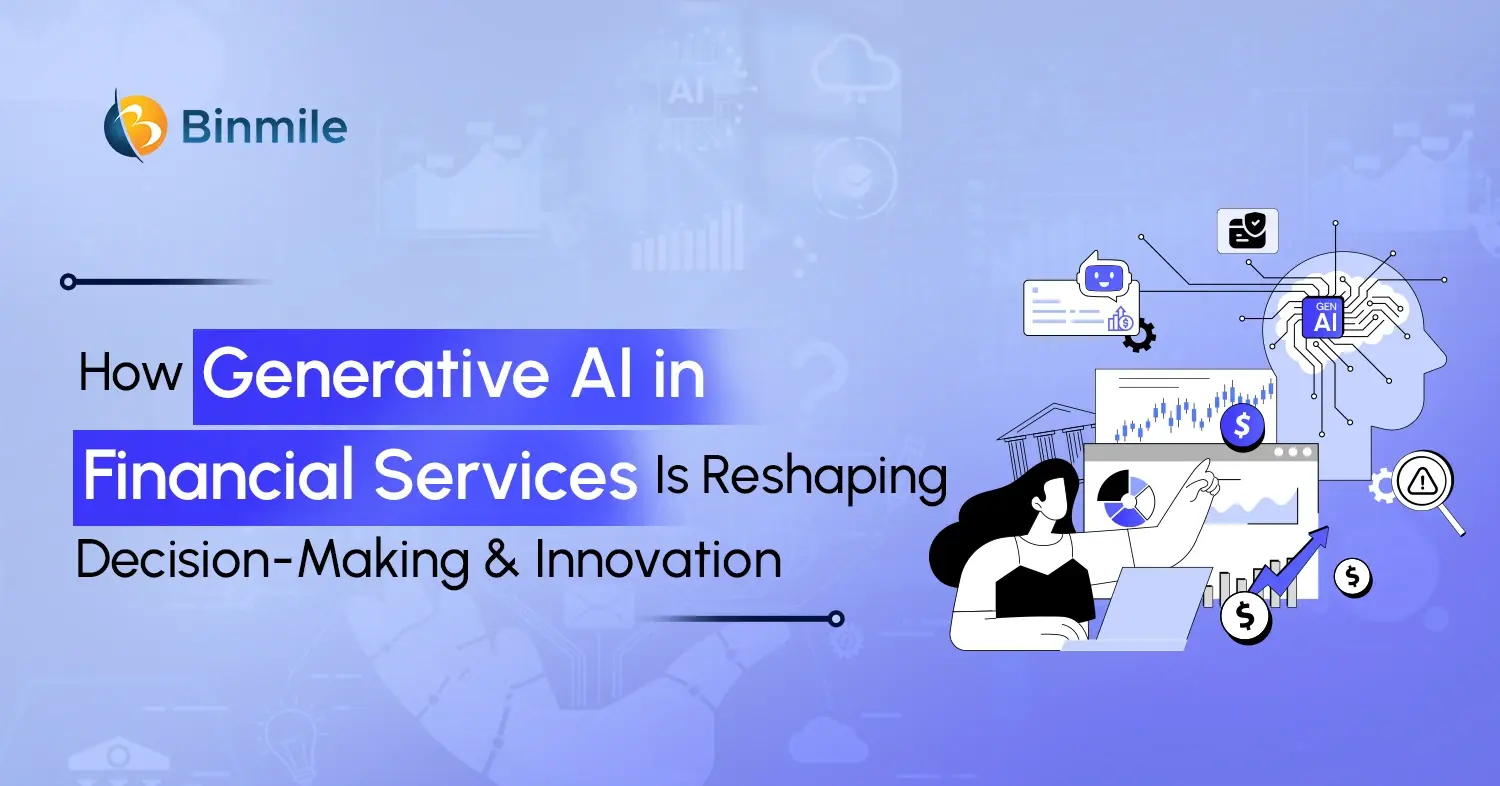The technological transformation in the finance and banking industry has brought in a significant shift in how BFSI delivers services and engages with customers. One of the driving factors is Robotics process automation in finance. Although RPA in finance may come as a surprise, but more than 80% of finance executives have implemented or plan to leverage RPA for their business processes. The reasons extend beyond simply automating repetitive tasks, and covers benefits like acceleration of processes, reduction of labor costs, and minimization of errors resulting from manual data entry and calculations.
However, there are still some organizations that are in the early stages of incorporating financial process automation. So, if you also want to understand how you can leverage this technology to manage high-volume, time-consuming work that is costly in terms of the rate of potential error, this blog is for you. In this blog, we will outline five RPA use cases in finance that are worth a closer look, and understand 7 ways financial process automation is redefining the way you get your work done. In addition, we will also share a few tips on how to successfully implement finance automation for better outcomes and a customer experience.
What is Meant By RPA in Finance?

RPA, or Robotic Process Automation, is a software robotics solution that leverages intelligent automation technologies, such as AI or ML, to perform repetitive tasks, including extracting data, filling in forms, and moving files. RPA has been playing a key role in various industries, such as robotics & AI in the food industry, as well as in methodologies like RPA in DevOps. However, when it comes to robotic process automation in banking or finance, the significance is far greater than just automating repetitive, human-driven tasks, including invoice processing, data entry, and compliance reporting.
When used effectively, RPA enables BFSI service providers to shift from mere automation (mimicking human actions) to intelligent business automation that leverages data to optimize end-to-end finance processes, particularly recurring tasks that can be performed without human intervention. This frees up employees to focus on core activities. These can be from analyzing data to gain a competitive advantage, to turning great ideas into new financial products, and, more importantly, building strong relationships with customers.
Top Use Cases of Robotic Process Automation in Finance
Robotic Process Automation (RPA) is bringing an immense shift in the finance sector, making operations lean and reducing manual effort. The five best use cases are as follows:
- Accounts Payable & Receivable Automation: RPA can be used to automate invoice processing, matching purchase orders, reconciling payments, and minimizing human intervention when handling transactions.
- Fraud Detection & Risk Management: A Bot can be used to monitor real-time transactions, flagging suspicious activity to reduce fraudulent transactions through value and behavioral pattern analysis, as well as anomaly detection.
- Regulatory Compliance and Reporting: Financial institutions must operate in accordance with strict regulations. With RPA in finance, data collecting, validating, and reporting are as accurate as possible, reducing compliance risks and errors.
- Loan Processing & Credit Analysis: Robotic Process Automation in banking streamlines the verification process by swiftly extracting data. This leads to streamlined processes and faster loan approvals, credit analysis, and eligibility determination, similar to enhancing the customer experience.
- Financial Planning & Forecasting: Financial process automation can enhance the predictive analytics process by automating data collection and analysis, and assist finance departments in making strategic decisions based on reliable insights.
The Impact of Robotic Process Automation in the Finance Industry: 7 Key Advantages
Robotic Process Automation (RPA) is revolutionizing the way banks and financial institutions operate. Banks worldwide are reporting impressive improvements after implementing RPA. JPMorgan Chase saved 360,000 hours annually through automated legal document analysis. Whereas, Deutsche Bank’s RPA systems now process over 1 million automatic transactions each month.
These results show that robotic process automation in banking is more than just a cost-cutting tool. It’s changing how financial work gets done. So, let’s explore the advantages of RPA in finance in detail:

1. Optimized Operational Efficiency
RPA allows finance teams to shift time-consuming, high-volume tasks, such as reconciliations, data validation, and transaction processing, off their plates and onto AI Chatbots that run 24/7. These bots follow set rules and workflows, delivering results in minutes, not hours or days. And they don’t pause, juggle priorities, or take breaks. That kind of reliable, always-on performance turns operational efficiency into a real business advantage, especially when every second counts.
2. Reliable Accuracy & Precision
Manual work leaves too much room for error: a stray decimal, an unchecked field, a data mismatch. Robotic Process Automation in banking mitigates that risk by performing tasks with precision, consistently, and without exception. Whether it’s syncing data across systems or ensuring compliance fields are correctly captured, bots don’t miss the details. The result? Cleaner books, sharper reporting, and fewer downstream issues are essential in a space where even small mistakes can lead to significant consequences.
3. Seamless Regulatory Compliance
Regulatory demands aren’t going away, and falling short can be costly. RPA in finance helps ease the compliance burden by embedding checks, data validation, and documentation steps into automated workflows. Every action a bot takes is logged and timestamped, offering a clear audit trail with no extra manual oversight required. Whether you’re navigating AML, KYC, or GDPR FinTech compliance, automation ensures compliance stays consistent and visible, without adding strain to your teams.
4. Cost Reduction & Stability
RPA delivers real cost efficiencies not just by freeing teams from repetitive work, but by reducing rework, errors, and compliance failures that drain resources. Once up and running, bots are low-maintenance and can scale without the costs associated with hiring new staff or engaging external vendors. Unlike traditional banking systems, RPA provides consistent output at a predictable cost. It’s about building leaner, more resilient processes that drive sustainable growth, not just doing more with less.
5. Accelerated Service Delivery
Speed and accuracy shape the customer experience. Whether it’s fast loan approvals, smoother onboarding, or quicker responses, RPA helps financial firms deliver at pace. By handling backend tasks, document processing, verification, and credit checks, bots free up frontline staff to focus on providing personal service. This level of proactive automation in customer service is appreciated by them, resulting in less waiting, faster updates, and greater transparency. In a market where expectations are high and patience is thin, this can be a decisive edge.
6. Scalable Growth & Adaptability
One of RPA’s greatest strengths is its flexibility, as business volumes spike during quarter close, tax season, or periods of growth, bots can scale up quickly. No new infrastructure. No lengthy hiring cycles. And when demand tapers, you can scale back just as easily. RPA also works alongside existing systems, allowing you to expand capacity without disrupting what already works. This built-in agility makes it an innovative tool for navigating today’s unpredictable market cycles.
7. Foundation for Future Automation
RPA often marks the beginning of broader intelligent automation. When paired with technologies like OCR, machine learning, or natural language processing, RPA bots can go beyond rote tasks, interpreting unstructured data, learning from trends, and making informed decisions. This unlocks opportunities in predictive analytics, fraud detection, and more intelligent customer engagement. In other words, RPA isn’t just about automating what you do today; it’s about preparing your business for what’s next.
Curious how RPA could transform your financial operations? Let our engineers show you how tailored automation can drive real ROI — not just efficiency.

RPA Trends for the Finance Industry: Challenges & Possibilities
Before we discuss how emerging technologies will change the way RPA is used in finance. Let’s first understand the challenges and concerns associated with implementing RPA in financial ecosystems. Many financial institutions still rely on legacy systems, making integration a complex and costly process. While automation speeds up processes, it also requires continuous updates to stay compliant with evolving regulations.
Security remains another concern without proper observability for resilient systems; automated workflows can amplify errors or expose sensitive data. To fully leverage the benefits of RPA, businesses therefore need a strategic approach that includes robust governance, adaptability, and a well-defined roadmap for scaling automation effectively.
Looking Ahead: What’s Next for RPA in Finance & Banking
The future of RPA goes beyond just doing current tasks faster, so let’s understand what’s in store for Robotic Process Automation in Finance. Here are five key RPA trends set to shape the finance industry:
- Hyperautomation & AI Integration: RPA is evolving with AI and ML, enabling smarter decision-making and hyperautomation that extends beyond repetitive tasks.
- End-to-End Process Automation: Firms are automating entire workflows, not just individual tasks, enhancing operational efficiency and reducing manual interventions.
- Document & Compliance Automation: Advanced bots now handle regulatory compliance and document processing, minimizing human errors in audits and reporting.
- Enhanced Security and Risk Management: RPA solutions are incorporating stronger cybersecurity measures to prevent fraud, such as synthetic identity fraud, and protect sensitive financial data.
- Cloud-Based RPA Solutions: Cloud adoption in RPA enables seamless scalability, cost efficiency, and easier integration with existing financial systems.
5 Best Practices for a Successful RPA Implementation in Finance
Effective RPA implementation requires more than technology; let’s help you understand the key considerations for you to start your journey with RPA. These best practices help ensure automation delivers sustained value in finance.

1. Prioritize Quick Wins First
You should begin by automating simple rules-based tasks that give quick results. This way, implementation is sped up and the results are visible, without interfering with primary operations. Early success makes it easier to continue with wide-scale automation projects within the organization.
2. Establish Cross-Functional Collaboration
For an effective RPA rollout, the teams have to be in sync. When all parties, including those focused on scaling engineering teams, cooperate from the beginning, automation projects can meet the expectations of both what the company plans to do and what regulations require. That too, without creating any technical or process issues or conflicts.
3. Build a CoE to Support Scale
When your automation program matures, you should formalize it with a Center of Excellence (CoE). Adding a CoE enables the organization to effectively utilize RPA (by establishing standards, improving processes, and providing governance) and ensure that quality is not compromised as it expands.
4. Track & Communicate Business Impact
Continue to check and monitor the results that RPA delivers based on the KPIs set earlier. Metrics such as reduced time, fewer errors, and a more efficient process can demonstrate to management that an investment is worthwhile. This result-based outcome ultimately encourages stakeholders and secures additional resources, influencing future funding decisions.
5. Regularly Review & Optimize RPA Processes
RPA requires continuous updates and changes; therefore, make it a practice to review the progress of your bots on a regular basis. Optimizing operations on a regular basis allows performance to be maintained, helps make the systems more efficient, and extends the long-term value of automation.
Whether it’s payments, compliance, or credit workflows — we help financial institutions turn RPA strategy into scalable execution.

Closing Remarks on RPA in Finance
The transformative potential of robotic process automation in finance cannot be overstated. It empowers organizations to streamline complex, manual workflows through intelligent automation, driving higher levels of efficiency, accuracy, and strategic focus across financial operations. As the pace of change accelerates and demands on finance teams multiply, adopting RPA in finance may feel like a daunting shift. However, partnering with an experienced fintech software development company can provide the right roadmap and technical expertise, helping organizations avoid inefficiencies, mitigate compliance risks, and overcome scaling challenges through well-executed, cross-functional coordination.
To truly capitalize on this shift, finance leaders must develop a nuanced understanding of where and how financial process automation fits within their operational architecture. In this blog, we explored seven key areas where RPA is making a measurable impact. We hope this deep dive has helped clarify the value RPA brings to modern finance and inspired you to identify automation opportunities that create lasting operational and strategic gains.
Automation works best when it’s built around your business needs. Let’s figure out what that looks like for you. Schedule a free consultation today!









